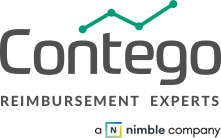If you had the ability to use claims data to drive better reimbursements, would you?
Crazy question, right? Of course, you would.
Predictive modeling is the process of using known results to create a better process model that can forecast future outcomes. Predictive modeling has all sorts of applications in healthcare. Predictive modeling is helping physicians to identify patients that are at high risk of readmission and so diminish the risk and increase patient health. Healthcare marketers use predictive modeling to improve return on investment by focusing their resources on those individuals who most likely to engage with their healthcare systems. These are just a couple of the ten high-value uses for predictive modeling in healthcare.
Health insurers have typically leveraged competitive technologies, like predictive modeling, before most healthcare providers, simply because they are able to take advantage of their size and the fact that their business is not to provide care. Insurers have been using predictive analytics for over a decade to develop risk adjustment measures. With sufficient claims data, insurers can now even identify high cost patients.
Most healthcare providers do not have the luxury of time to analyze reams of data in order to glean the most pertinent information that advances patient care or reimbursements. Large health systems may have IT departments that can provide such a fount of data and analysis, but most healthcare providers need to (and want to) invest their time in some form of direct patient care. Data analytics and predictive modeling are not a substitute for face-to-face patient interactions.
That still leaves healthcare providers wondering if there is a way to level the playing field with insurers when it comes to obtaining appropriate reimbursements.
Providers can leverage loads of healthcare data without having to take on the responsibility of analyzing it or the expense of buying it. Contego Solutions can help healthcare providers could use the analysis in a way that drives smarter patient choices that keep with their benefits and are aligned for better reimbursements.

